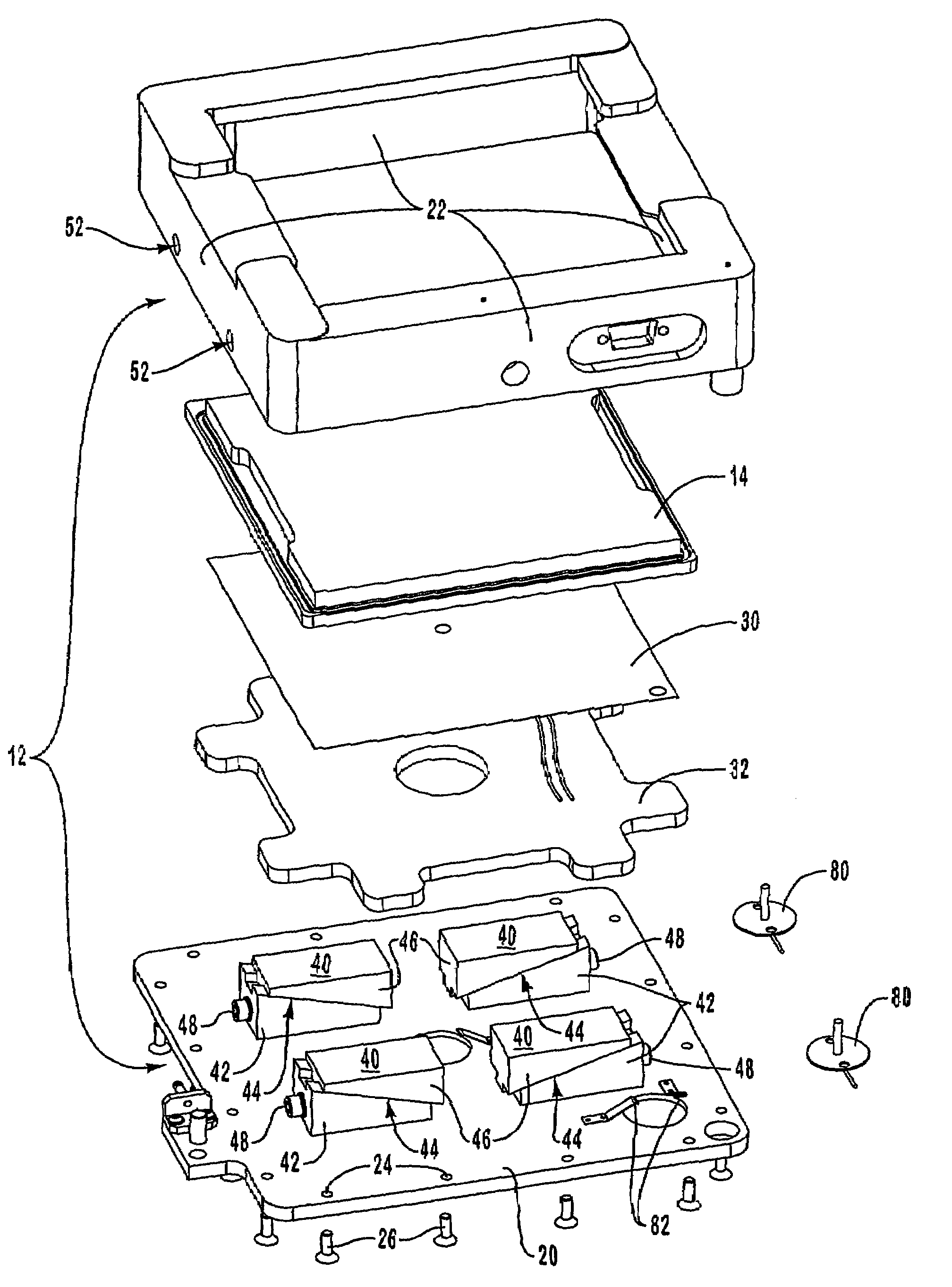Temperature controlled vacuum chuck
- Summary
- Abstract
- Description
- Claims
- Application Information
AI Technical Summary
Benefits of technology
Problems solved by technology
Method used
Image
Examples
Embodiment Construction
[0032]The present invention is generally directed to temperature controllable vacuum chucks and, more specifically, to vacuum chucks configured to secure a substrate in a desired placement while simultaneously heating the substrate in a manner that is sufficient for providing control over the cure rate of fluid materials deposited on the substrate.
[0033]The terms “fluid manufacturing material” and “fluid material,” as defined herein, should be broadly construed to include any material that can assume a low viscosity form and which is suitable for being deposited onto a substrate for forming a microstructure. Fluid materials may include, but are not limited to, light-emitting polymers (LEPs), which can be used to form polymer light-emitting diode display devices (PLEDs, and PolyLEDs). Fluid materials may also include plastics, metals, waxes, solders, solder pastes, biomedical products, acids, photoresists, solvents, adhesives, epoxies, and the like.
[0034]The term “deposit” is general...
PUM
| Property | Measurement | Unit |
|---|---|---|
| Temperature | aaaaa | aaaaa |
| Temperature | aaaaa | aaaaa |
| Pressure | aaaaa | aaaaa |
Abstract
Description
Claims
Application Information
 Login to View More
Login to View More - R&D
- Intellectual Property
- Life Sciences
- Materials
- Tech Scout
- Unparalleled Data Quality
- Higher Quality Content
- 60% Fewer Hallucinations
Browse by: Latest US Patents, China's latest patents, Technical Efficacy Thesaurus, Application Domain, Technology Topic, Popular Technical Reports.
© 2025 PatSnap. All rights reserved.Legal|Privacy policy|Modern Slavery Act Transparency Statement|Sitemap|About US| Contact US: help@patsnap.com



